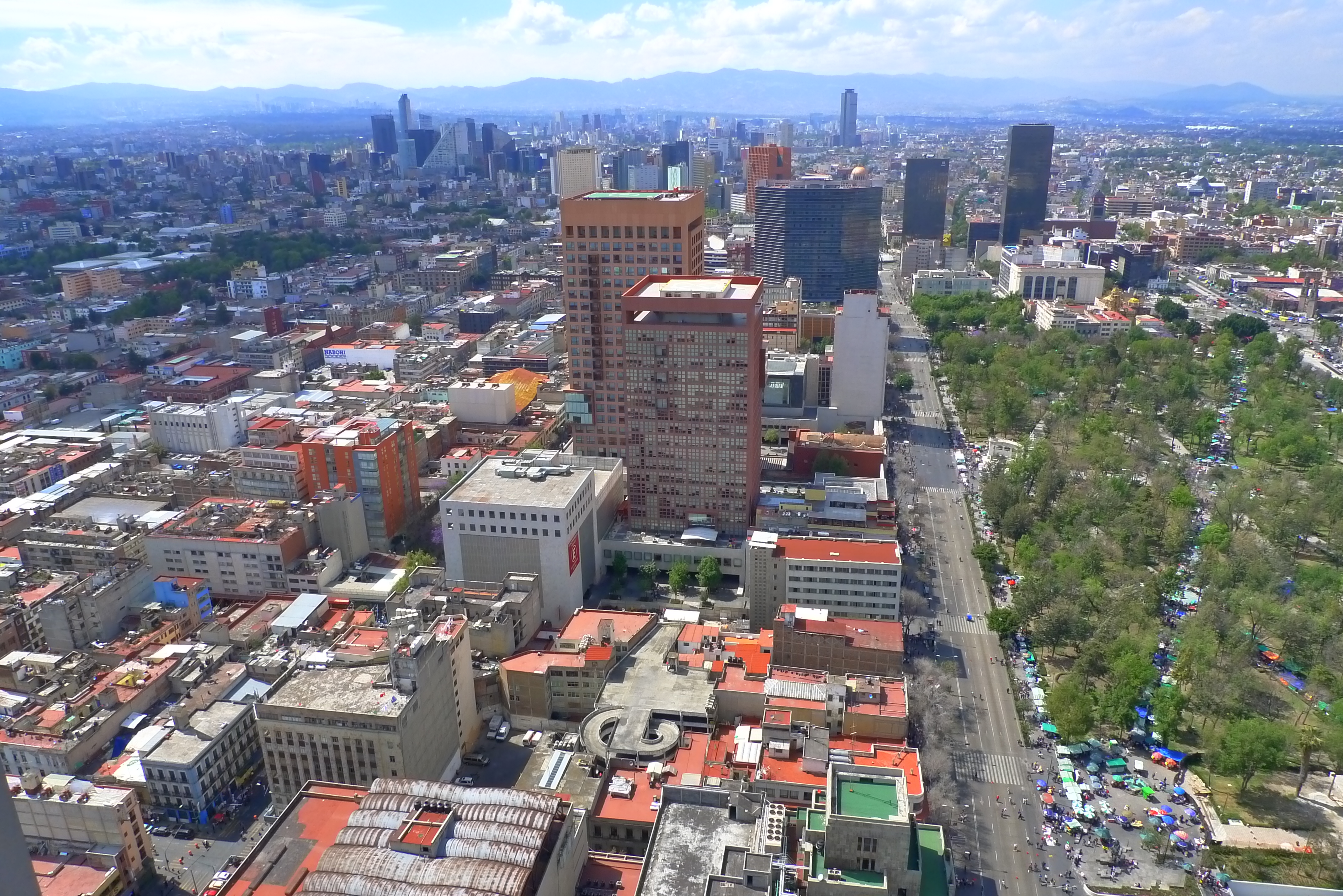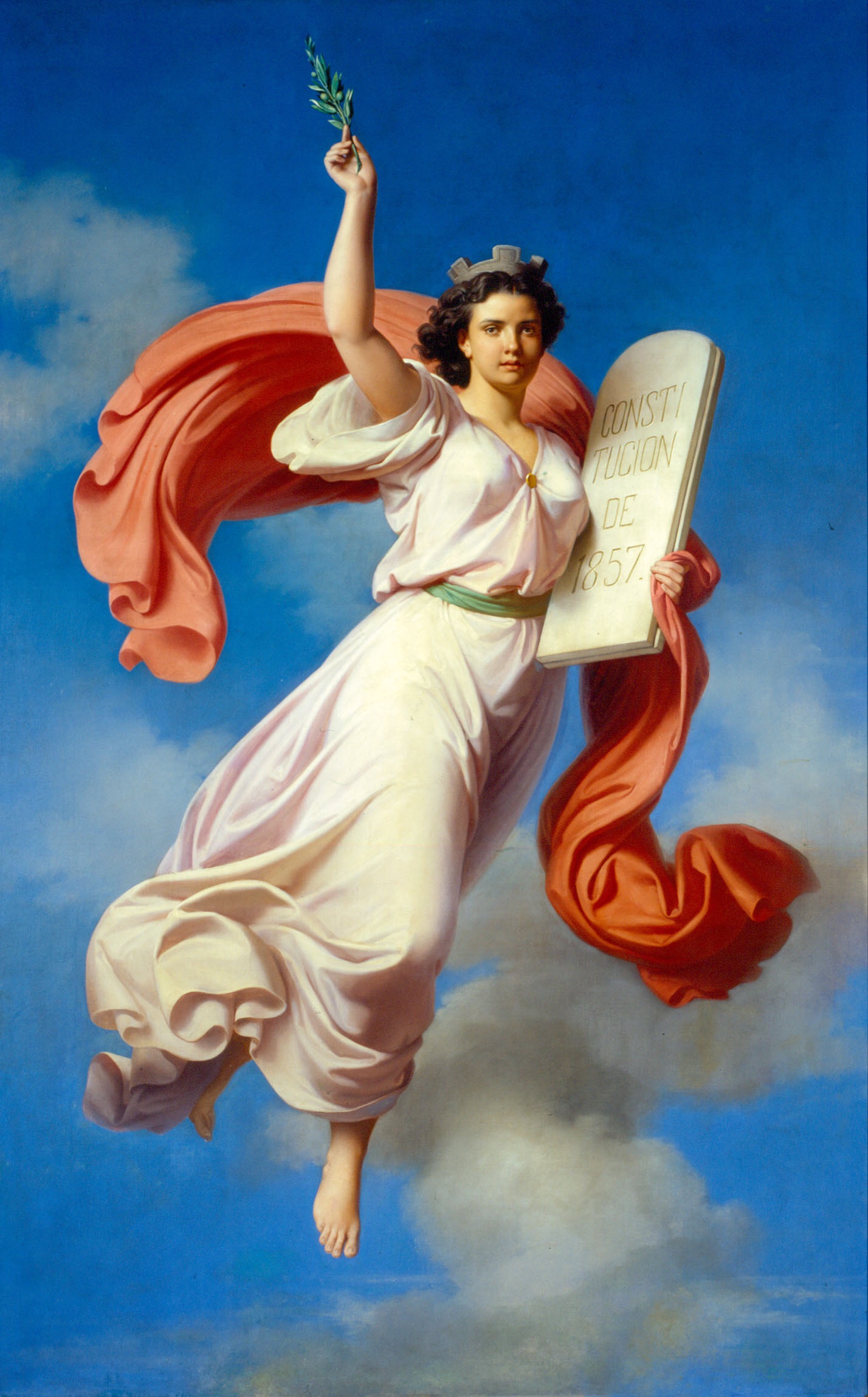|
Corpus Christi Church, Mexico City
The Corpus Christi Church is a former church on Avenida Juárez in the Historic center of Mexico City. It is the only remaining part of the Convent of Corpus Christi, founded in 1724 for Indian women and which was closed as part of the Reform Laws. The architect of the baroque structure was Pedro de Arrieta who also designed the Palace of the Inquisition and the Church of San Felipe Neri "La Profesa". The church was damaged during the 1985 earthquake and it was restored. See also *List of colonial churches in Mexico City *Catholic Church in Mexico , native_name_lang = , image = Catedral_de_México.jpg , imagewidth = 250px , alt = , caption = The Mexico City Metropolitan Cathedral. , abbreviation = , type = ... References 1724 establishments in New Spain 18th-century Roman Catholic church buildings in Mexico 18th century in Mexico City Baroque church buildings in Mexico Historic ce ... [...More Info...] [...Related Items...] OR: [Wikipedia] [Google] [Baidu] |
Mexico City 2015 144
Mexico (Spanish: México), officially the United Mexican States, is a country in the southern portion of North America. It is bordered to the north by the United States; to the south and west by the Pacific Ocean; to the southeast by Guatemala, Belize, and the Caribbean Sea; and to the east by the Gulf of Mexico. Mexico covers ,Mexico ''''. . making it the world's 13th-largest country by a ... [...More Info...] [...Related Items...] OR: [Wikipedia] [Google] [Baidu] |
Avenida Juárez
Avenida Juárez is a street in the Historic Center of Mexico City flanking the south side of the centuries-old Alameda Central park. Originally each block had a different name: *Calle de la Puente de San Francisco between San Juan de Letrán (today Eje Central Lázaro Cárdenas) and López, in front of the Palacio de Bellas Artes *Calle de Corpus Christi, between López and Nueva (today Luis Moya) *Calle del Calvario, between Nueva (today Luis Moya) and San Diego (hoy Dr. Mora) *Calle de Patoni between San Diego (today Dr. Mora) and Rosales/Bucareli/Paseo de la Reforma During the 1940s through the 1960s it was one of the city's boulevards, lined with upscale shops and hotels. In the 1985 Mexico City earthquake, the Alameda, Del Prado and Regis hotels collapsed or were torn down. The street runs between the intersection of Paseo de la Reforma and Avenida Bucareli, marked by Sebastián's sculpture known as ''El Caballito'', and Eje 1 Central, east of which it becomes Madero ... [...More Info...] [...Related Items...] OR: [Wikipedia] [Google] [Baidu] |
Historic Center Of Mexico City
The historic center of Mexico City ( es, Centro Histórico de la Ciudad de México), also known as the Centro or Centro Histórico, is the central neighborhood in Mexico City, Mexico, focused on Zócalo or main plaza and extending in all directions for a number of blocks, with its farthest extent being west to the Alameda Central. The Zocalo is the largest plaza in Latin America. It can hold up to nearly 100,000 people. This section of the capital lies in the municipal borough of Cuauhtémoc, has just over nine square km and occupies 668 blocks. It contains 9,000 buildings, 1,550 of which have been declared of historical importance. Most of these historic buildings were constructed between the 16th and 20th centuries. It is divided into two zones for preservation purposes. Zone A encompasses the pre-Hispanic city and its expansion from the Viceroy period until Independence. Zone B covers the areas all other constructions to the end of the 19th century that are considered indispens ... [...More Info...] [...Related Items...] OR: [Wikipedia] [Google] [Baidu] |
Reform War
The Reform War, or War of Reform ( es, Guerra de Reforma), also known as the Three Years' War ( es, Guerra de los Tres Años), was a civil war in Mexico lasting from January 11, 1858 to January 11, 1861, fought between liberals and conservatives, over the promulgation of Constitution of 1857, which had been drafted and published under the presidency of Ignacio Comonfort. The constitution had codified a liberal program intended to limit the political, economic, and cultural power of the Catholic Church; separate church and state; reduce the power of the Mexican Army by elimination of the ''fuero''; strengthen the secular state through public education; and economically develop the nation. The constitution had been promulgated on February 5, 1857 with the intention of coming into power on September 16, only to be confronted with extreme opposition from Conservatives and the Catholic Church over its anti-clerical provisions, most notably the Lerdo law, which forced the sale of mo ... [...More Info...] [...Related Items...] OR: [Wikipedia] [Google] [Baidu] |
Palace Of The Inquisition (Museum Of Mexican Medicine)
The Palace of the Inquisition stands on the corner of República de Brasil and República de Venezuela streets in Mexico City, Mexico. As neither side of the building faces Santo Domingo Plaza, the entrance is placed at a canted corner to face the plaza. Its long association with the Inquisition, which ended during the Mexican War of Independence, made it difficult to convert to other purposes. However, it eventually became the School of Medicine for the reconstructed National University (now the National Autonomous University of Mexico (UNAM)). When UNAM moved to the Ciudad Universitaria in the 1950s, it retained ownership of this building, eventually converting the structure in what is today the Museum of Mexican Medicine. Inquisition in New Spain From nearly the beginning of the colonial period until the Mexican War of Independence, this spot has been the headquarters of the Inquisition in the colony of New Spain. While the Tribunal of the Holy Inquisition was not fully e ... [...More Info...] [...Related Items...] OR: [Wikipedia] [Google] [Baidu] |
Church Of San Felipe Neri "La Profesa"
The Church of San Felipe Neri, commonly known as "La Profesa" ( en, the Professed house), is a Roman Catholic parish church that was established by the Society of Jesus late in the 16th century as the church of a community of professed Jesuits. The church is considered to be an important transitional work between the more sober or moderate Baroque style of the 17th century and the extremely decorated manifestations of the Baroque of the 18th century in Mexico. Located at the corner of Madero and Isabel la Católica Streets in Mexico City, diagonally opposite the Museo del Estanquillo, its original name was "La Iglesia de la Casa Profesa." This church is well known for being the site of a number of historical events, including the "La Profesa Conspiracy," which was instrumental in bringing Agustín de Iturbide to power and the "Polkos Rebellion". More recently, this church was the scene for deliberations relating to the beatification of Juan Diego. The church is also noted for ... [...More Info...] [...Related Items...] OR: [Wikipedia] [Google] [Baidu] |
1985 Mexico City Earthquake
The 1985 Mexico City earthquake struck in the early morning of 19 September at 07:17:50 (CST) with a moment magnitude of 8.0 and a maximal Mercalli intensity of IX (''Violent''). The event caused serious damage to the Greater Mexico City area and the deaths of at least 5,000 people. The sequence of events included a foreshock of magnitude 5.2 that occurred the prior May, the main shock on 19 September, and two large aftershocks. The first of these occurred on 20 September with a magnitude of 7.5 and the second occurred seven months later on 30 April 1986 with a magnitude of 7.0. They were located off the coast along the Middle America Trench, more than away, but the city suffered major damage due to its large magnitude and the ancient lake bed that Mexico City sits on. The event caused between three and five billion USD in damage as 412 buildings collapsed and another 3,124 were seriously damaged in the city. Then-president Miguel de la Madrid and the ruling Institutional Rev ... [...More Info...] [...Related Items...] OR: [Wikipedia] [Google] [Baidu] |
List Of Colonial Churches In Mexico City
This is a list of the preserved Colonial churches in Mexico City, the capital of Mexico. Aside from being a notable city in colonial times, the city grew in the 20th century enormously in terms of population, adhering to over a hundred of suburbs close to the city (former suburbs today called "pueblos originarios" or "colonias"). This is why the churches of the colonial city are only those located in the center, the rest of the churches listed are also colonial but of former suburbs, today parts of the city. Mexico City is home to the first and oldest European school of higher learning in the Americas, the same building was the first major school of interpreters and translators in the New World ( Colegio de Santa Cruz de Tlatelolco); also the main pilgrimage site in the Americas (Basilica of Our Lady of Guadalupe), both are included in this list. Criteria The list only includes Colonial-era places of Christian worship, and the list does not include the Greater Mexico City chur ... [...More Info...] [...Related Items...] OR: [Wikipedia] [Google] [Baidu] |
Catholic Church In Mexico
, native_name_lang = , image = Catedral_de_México.jpg , imagewidth = 250px , alt = , caption = The Mexico City Metropolitan Cathedral. , abbreviation = , type = National polity , main_classification = Catholic , orientation = Roman Catholic , scripture = Bible , theology = Catholic theology , polity = Episcopal , governance = CEM , structure = , leader_title = Pope , leader_name = Francis , leader_title1 = President , leader_name1 = Francisco Robles Ortega , leader_title2 = , fellowships_type1 = , fellowships1 = , division_type = , division = , division_type1 = , division1 = , division_type2 = , division2 = , division_type3 = , division3 = , associations = , founder = Juan de Zumárraga , a ... [...More Info...] [...Related Items...] OR: [Wikipedia] [Google] [Baidu] |
1724 Establishments In New Spain
Seventeen or 17 may refer to: *17 (number), the natural number following 16 and preceding 18 * one of the years 17 BC, AD 17, 1917, 2017 Literature Magazines * ''Seventeen'' (American magazine), an American magazine * ''Seventeen'' (Japanese magazine), a Japanese magazine Novels * ''Seventeen'' (Tarkington novel), a 1916 novel by Booth Tarkington *''Seventeen'' (''Sebuntiin''), a 1961 novel by Kenzaburō Ōe * ''Seventeen'' (Serafin novel), a 2004 novel by Shan Serafin Stage and screen Film * ''Seventeen'' (1916 film), an American silent comedy film *''Number Seventeen'', a 1932 film directed by Alfred Hitchcock * ''Seventeen'' (1940 film), an American comedy film *''Eric Soya's '17''' (Danish: ''Sytten''), a 1965 Danish comedy film * ''Seventeen'' (1985 film), a documentary film * ''17 Again'' (film), a 2009 film whose working title was ''17'' * ''Seventeen'' (2019 film), a Spanish drama film Television * ''Seventeen'' (TV drama), a 1994 UK dramatic short starring Christien ... [...More Info...] [...Related Items...] OR: [Wikipedia] [Google] [Baidu] |
18th-century Roman Catholic Church Buildings In Mexico
The 18th century lasted from January 1, 1701 ( MDCCI) to December 31, 1800 ( MDCCC). During the 18th century, elements of Enlightenment thinking culminated in the American, French, and Haitian Revolutions. During the century, slave trading and human trafficking expanded across the shores of the Atlantic, while declining in Russia, China, and Korea. Revolutions began to challenge the legitimacy of monarchical and aristocratic power structures, including the structures and beliefs that supported slavery. The Industrial Revolution began during mid-century, leading to radical changes in human society and the environment. Western historians have occasionally defined the 18th century otherwise for the purposes of their work. For example, the "short" 18th century may be defined as 1715–1789, denoting the period of time between the death of Louis XIV of France and the start of the French Revolution, with an emphasis on directly interconnected events. To historians who expand the ... [...More Info...] [...Related Items...] OR: [Wikipedia] [Google] [Baidu] |




